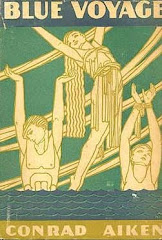
Lowry mentions the above track to Carol Brown in a letter to her in June 1926 when he realises that his love is not going to be reciprocated by Carol.
Lowry asks her to remember the song on the other side of "Just A Little Drink" - on Columbia. This can only refer to the California Ramblers track "Dromedary" which is the other side of the 78. I am not certain why he refers to the track as a reference to be be remembered by except that a dromedary is an Arabian camel and Malc used the alias Camel when he wrote for the Leys School magazine Fortnightly.
Unfortuantely, I was only able to find a snippet of the song. However, here's the Paul Whiteman Orchestra's version of "Just A Little Drink" which could have been Malc's theme song!
One of the most popular jazz outfits of the 1920s, the California Ramblers were also certainly the most prolific. Though signed with Columbia Records they waived all royalties with the label for the right to record for other companies under differing names. Throughout the decade they recorded for practically every label in the United States, Canada and Great Britain using 111 different pseudonyms, however they most often worked under the Rambler's title and the nom de plume ''Golden Gate Orchestra.''

The name California Ramblers is deceiving as most of the original members of the band were from Ohio. Their career began when agent Ed Kirkeby found them work in New York accompanying singer Eva Shirley. The group soon began arguing amongst themselves, however, and broke up. Leader Ray Kitchingham then took over Arthur Hand's orchestra, which at that time included such personnel as Red Nichols and the Dorsey Brothers. Kirkeby found the new group work, which included a stay at the Post Lodge in Pelham, New York. The lodge later changed its name to the California Ramblers Inn, and the group took its moniker.
The orchestra first recorded in 1921 and was instantly successful. Its lively rhythms and hot solos, different than the staid dance music of other white orchestras, caught the public's ear. Standing out on many of the recordings was the bass sax work of Adrian Rollini. Rollini shunned the traditional role of the instrument as rhythm and emerged as a soloist, giving the group a distinctive flavor. Trumpeter Bill Moore became the first permanent black member of a white orchestra when he joined in the early 1920s, though most audiences never knew, as the Ramblers had become primarily a studio orchestra. At various time vocals were by Kirkeby, Artie Dunn, Billy Jones, Irving Kaufman, Arthur Hall, and Sammy Fain.
In 1924 Kirkeby formed a quintet with some of the group members in order to exploit the public taste for ''hot'' jazz and novelty numbers. Called the Goofus Five (a ''goofus'' was a small instrument that looked like a saxophone but sounded like a harmonica), the outfit eventually expanded to seven or eight members and recorded for the Okeh label. Vocals were sparing on Goofus Five recordings but when present were handled variously by Beth Challis, Russell Douglas, Ernest Hare, Billy Jones, Earl Rickerd and Blanche Vincent. The group stopped recording in 1927.
1927 also marked a turning point for the Ramblers. After a successful tour of England, many of the band's key musicians decided to remain behind when it came time to return to the United States, including Adrian Rollini. The Ramblers' sound suffered considerably. The new orchestra focused more on dance music than on jazz and the group's popularity and novelty declined. Rollini returned in 1929 for the outfit's ''final'' recording. Various units, however, recorded under the Rambler names throughout the 1930s. Solid
Here's a tune which Malc probably sang many times after leaving the pub:







No comments:
Post a Comment